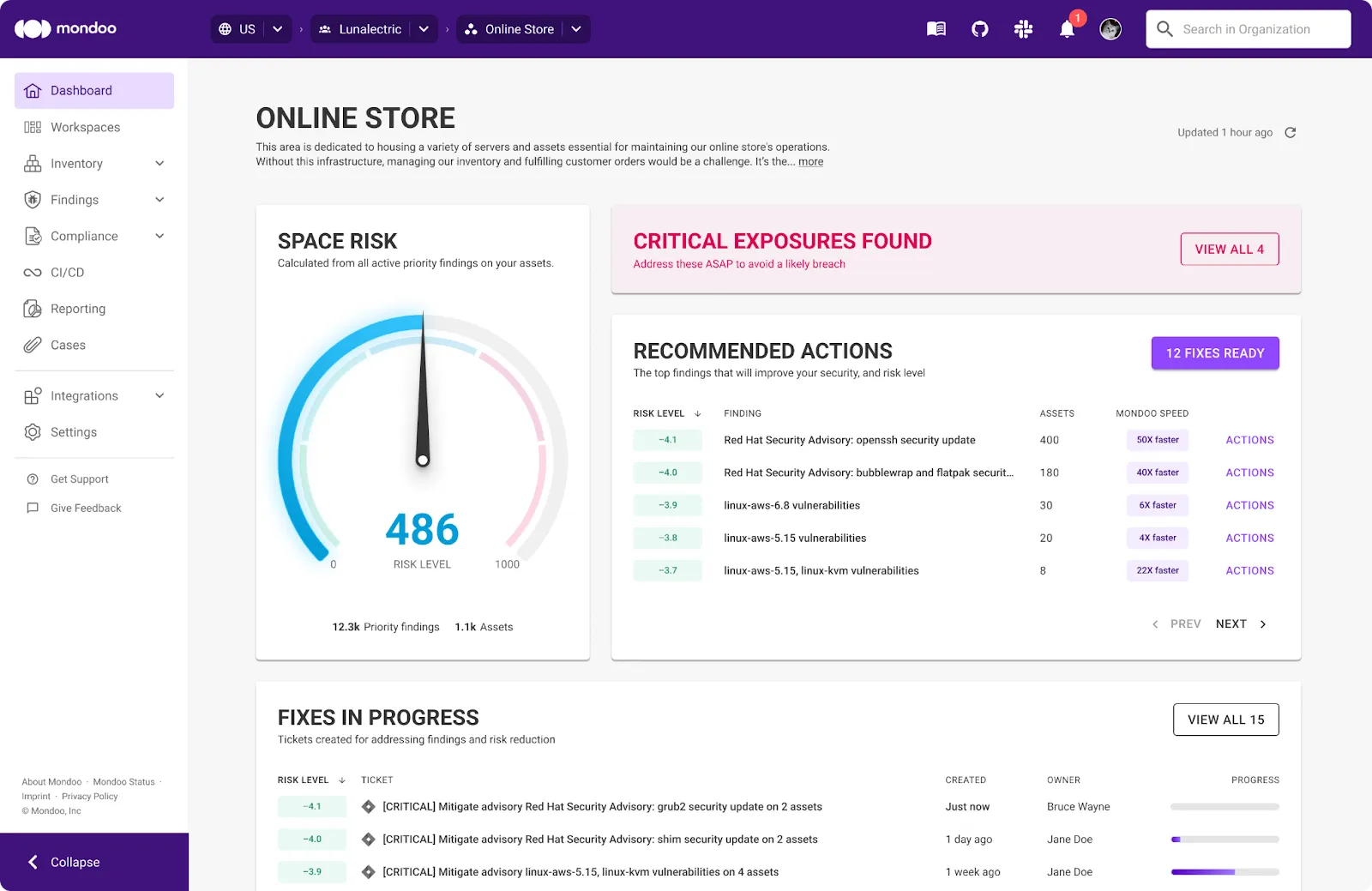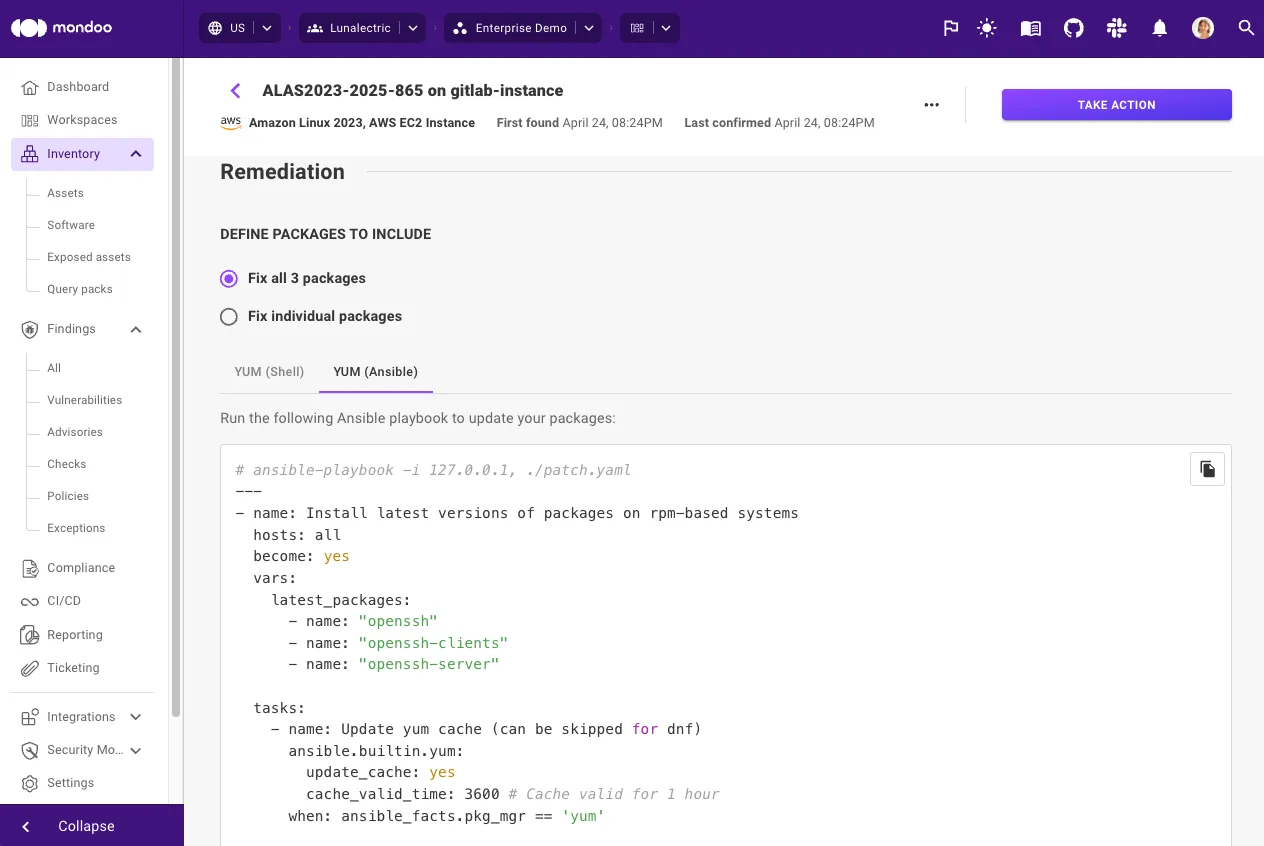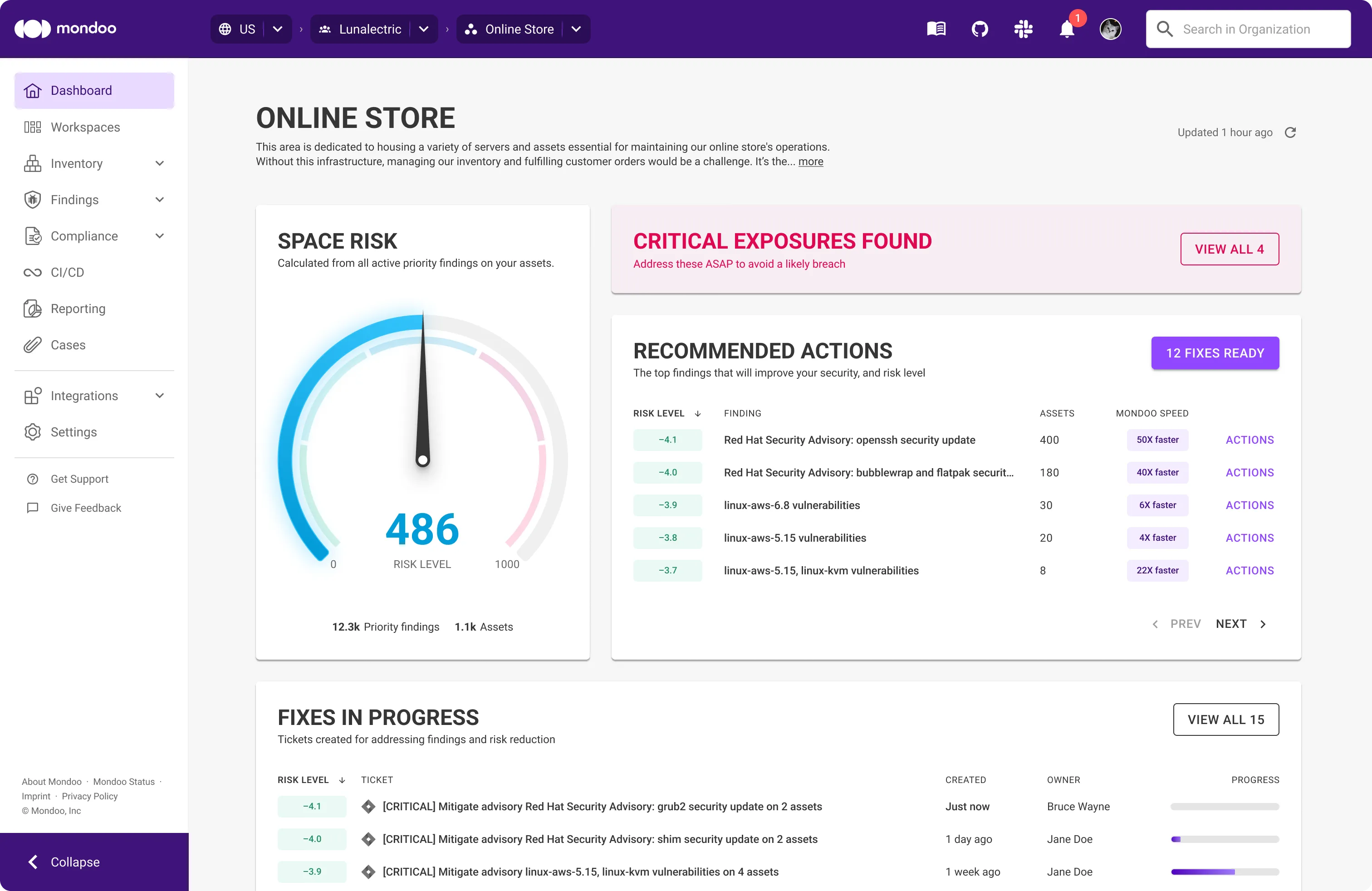In today's rapidly evolving digital world, cyber threats are becoming more sophisticated, making security vulnerabilities a critical concern for businesses, organizations, and individuals. A security vulnerability is a flaw, weakness, or oversight in a system, application, network, or process that attackers can exploit to compromise the confidentiality, integrity, or availability of data or resources. Understanding and managing these vulnerabilities is essential to safeguarding sensitive information and maintaining operational security. This guide explores what security vulnerabilities are, their impact, and how to manage them effectively with tools like Mondoo.
What are security vulnerabilities?
A security vulnerability is any gap in security measures that could allow unauthorized access, data breaches, or malicious actions. These weaknesses can arise from software bugs, misconfigurations, or outdated systems, leaving systems exposed to cyberattacks. Vulnerabilities are cataloged in the Common Vulnerabilities and Exposures (CVE) database, with severity ranked on a 0-10 scale using the Common Vulnerability Scoring System (CVSS), based on exploitability, impact, and complexity.
Key characteristics of security vulnerabilities
- Types: Software bugs, misconfigurations, weak passwords, outdated systems, or design flaws.
- Examples: Buffer overflows, SQL injection, cross-site scripting (XSS), unpatched software, or exposed APIs.
- Impact: Risks include data theft, system downtime, malware infections, or unauthorized system control.
- Detection: Identified through vulnerability scanning, penetration testing, or code reviews.
- Mitigation: Addressed with patches, updates, configuration changes, or enhanced security controls.
Why security vulnerabilities matter
Unaddressed vulnerabilities can have devastating consequences. For instance, the 2017 Equifax breach, caused by an unpatched Apache Struts vulnerability, exposed the personal data of 147 million individuals. Similarly, the WannaCry ransomware exploited a Windows vulnerability, impacting hundreds of thousands of systems worldwide. These incidents underscore the risks of:
- Financial Losses: Costs from recovery, legal fees, and fines.
- Reputational Damage: Loss of customer trust and brand credibility.
- Regulatory Penalties: Fines under regulations like GDPR or HIPAA.
- Operational Risks: Downtime or compromised critical systems, especially in sectors like healthcare or finance.
Proactively managing vulnerabilities is key to minimizing these risks and maintaining robust cybersecurity.
Best practices for managing security vulnerabilities
Effective vulnerability management requires a strategic, proactive approach:
- Discovery: Use automated scanning tools to identify vulnerabilities across your infrastructure.
- Prioritization: Focus on high-severity vulnerabilities based on exploit potential and business impact.
- Remediation: Apply patches, adjust configurations, or deploy compensating controls to mitigate risks.
- Continuous Monitoring: Regularly track new vulnerabilities and verify remediation efforts.
Integrating vulnerability management into DevSecOps pipelines ensures issues are caught early, reducing the attack surface and enhancing security throughout the development lifecycle.
How Mondoo simplifies security vulnerability management
Mondoo identifies security vulnerabilities across diverse infrastructures, including on-premises, cloud, and SaaS services. Mondoo’s agentic security model enables businesses to prioritize vulnerabilities based on their specific needs, ensuring efficient resource allocation.

Mondoo seamlessly integrates with IT systems like Jira, ServiceNow, GitHub, and GitLab, streamlining workflows and embedding security into existing processes. Additionally, Mondoo provides detailed remediation steps with ready-to-use Bash, PowerShell, Ansible, and Terraform scripts, empowering teams to address vulnerabilities quickly and effectively.

Stay ahead of cyber threats with Agentic Vulnerability Management
Security vulnerabilities are an inevitable part of the digital landscape, but their risks can be mitigated with the right strategies and tools. By understanding vulnerabilities, prioritizing risks, and leveraging solutions like Mondoo, organizations can transform vulnerability management into a strategic advantage, ensuring robust protection in an ever-threatened digital world.
Ready to secure your systems? Explore how Mondoo can help you identify, prioritize, and remediate vulnerabilities across your infrastructure today. Schedule a demo.
See Agentic Vulnerability Management in Action
FAQs
Is Agentic AI secure?
As with all systems, when deploying AI it’s important to use a secure and transparent architecture, enable thorough logging, and monitor events. By restricting agent actions to only what is absolutely necessary for completing assigned tasks, risks can be kept to a minimum. Further guardrails, such as allowing users to interrupt or shut down Agentic AI systems when necessary, and conducting regular audits on the agents and their actions can also build confidence and trust.
What makes Mondoo Agentic vulnerability management different?
Even though vendors may describe seemingly identical processes and technologies, under the hood, there are important differences between each system. There are several factors that make Mondoo stand out from other solutions: (1) Quality of data: Width and depth of Mondoo’s insights on the IT infrastructure, (2) Transparency: Use of Policy as Code and open source technologies such as Ansible and Terraform, (3) Rollback: Remediation pipeline includes versioning and rollback, (4) Guardrails: Granular exceptions, scoping, and human control levels.
What guardrails can be set in place for Agentic AI?
By requiring human approval before tasks are executed, scoping use cases, setting exceptions, and offering rollback options, you can ensure that agents operate safely within set guardrails. These guardrails can be loosened once confidence and trust is built up.
How can I start using Agentic vulnerability management?
It’s best to start with a specific, straightforward use case in a low risk or test environment and then gradually expand. First, agents should require human approval for every task. Then start slowly allowing more autonomy.
Is Agentic vulnerability management already available?
Although some vendors may be touting Agentic vulnerability management without actually having it, Mondoo offers real agentic AI that’s already delivering. Contact us to see a live demo of Mondoo’s Agentic AI in action.
You might also like









